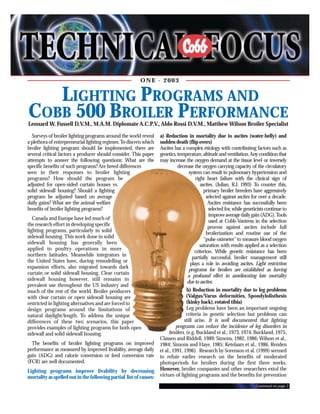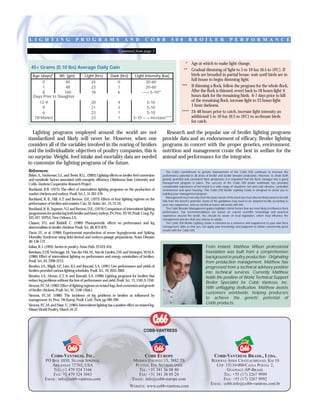This document discusses broiler chicken lighting programs and their effects on performance. It covers:
Light Intensity (lux)
24
23
18
0
1
6
20-60
20-60
---> 5-10**
15
18
23
23
9
6
1
1
5-10
5-10
5-10
5-10 ---> increase****
* Age at which to make light change.
** Light intensity can be decreased to 5-10 lux after light restriction begins.
*** If thinning a flock, follow the program for the whole flock. After the flock is thinned, revert back to



